The Greater Sage-Grouse never fails to captivate wildlife watchers with its striking plumage (white, black and bright gold), unusual size (it is the largest grouse in North America) and incredible courtship displays by males (a lively, noisy dance). The bird represents a special part of our country’s sagebrush steppe ecosystem. In the fall of 2013, Rocky Mountain Bird Observatory initiated a multi-year study in Sublette County, Wyoming, to test the effectiveness of different types of fence markers that help prevent grouse from colliding with barbed wire fences, so this bird can thrive in the sagebrush sea for years to come.
Recent studies and anecdotal observations suggest that mortality due to collisions with fencing might represent a significant source of Greater Sage-Grouse mortality. In the fall of 2013 and spring of 2014, RMBO biologists and technicians, with the help of the Natural Resources Conservation Service and Bureau of Land Management, installed three different styles of fence markers, covering almost 24 miles of fencing, throughout Sublette County where collision risk was thought to be high. Technicians then patrolled stretches of marked and unmarked fencing to document collisions. Data from these surveys will allow us to test the effectiveness of the fence markers in preventing grouse collisions with fences.
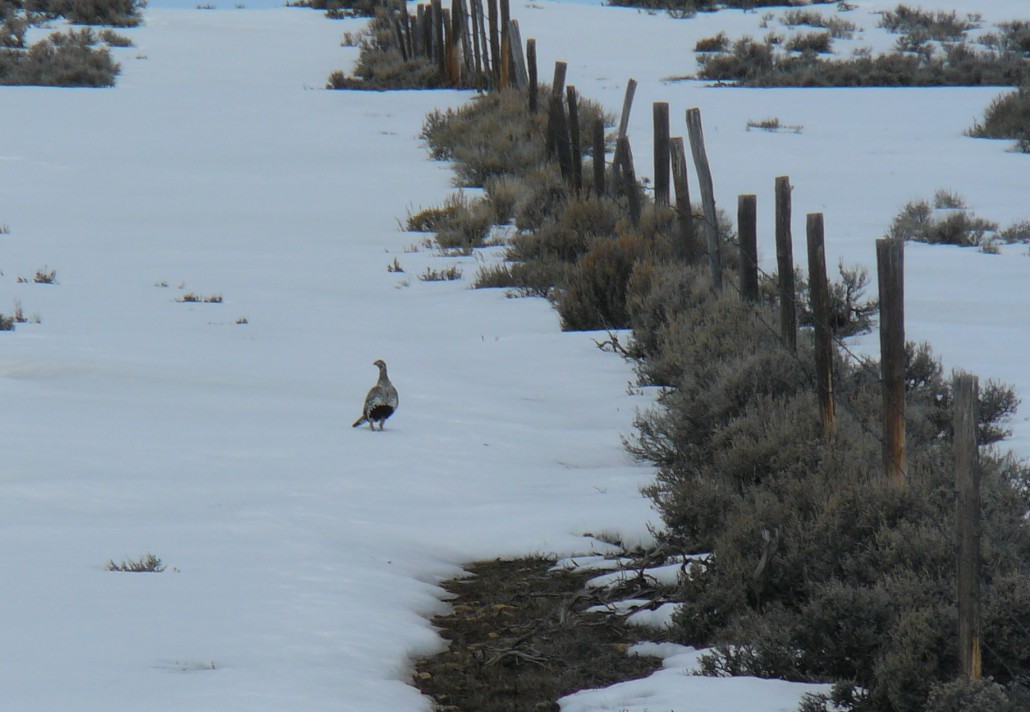
A Greater Sage-Grouse is observed while surveying fence line in the spring of 2014. We’re in the right area! Photo by Angela Stemen.
Last spring, Sublette County experienced abnormally cold temperatures with a snowpack far exceeding the seasonal average. Snow persisted across our study area far later than it might in most years. Despite the snowy spring hampering access to sites, the crew was able to survey nearly 340 miles of fences (mostly on snowshoes). Those survey miles resulted in more than 15 confirmed strikes, where feathers were found on the fence and a substantial amount of feathers were scattered on the ground. We also found more than 25 additional places where sage-grouse likely hit the fence (there were lots of sage-grouse feathers on the ground near the fence), but there was no evidence remaining on the wire.
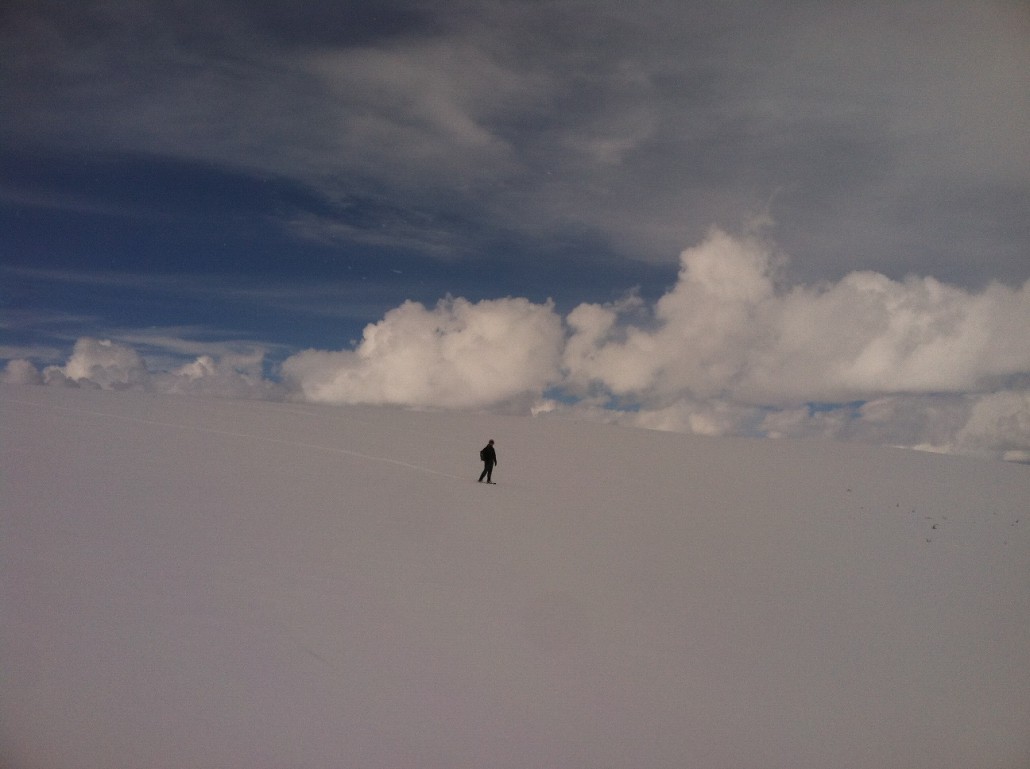
Whoa, look at all that snow! A technician heads back to the truck after a survey. Photo by Galen Reid.
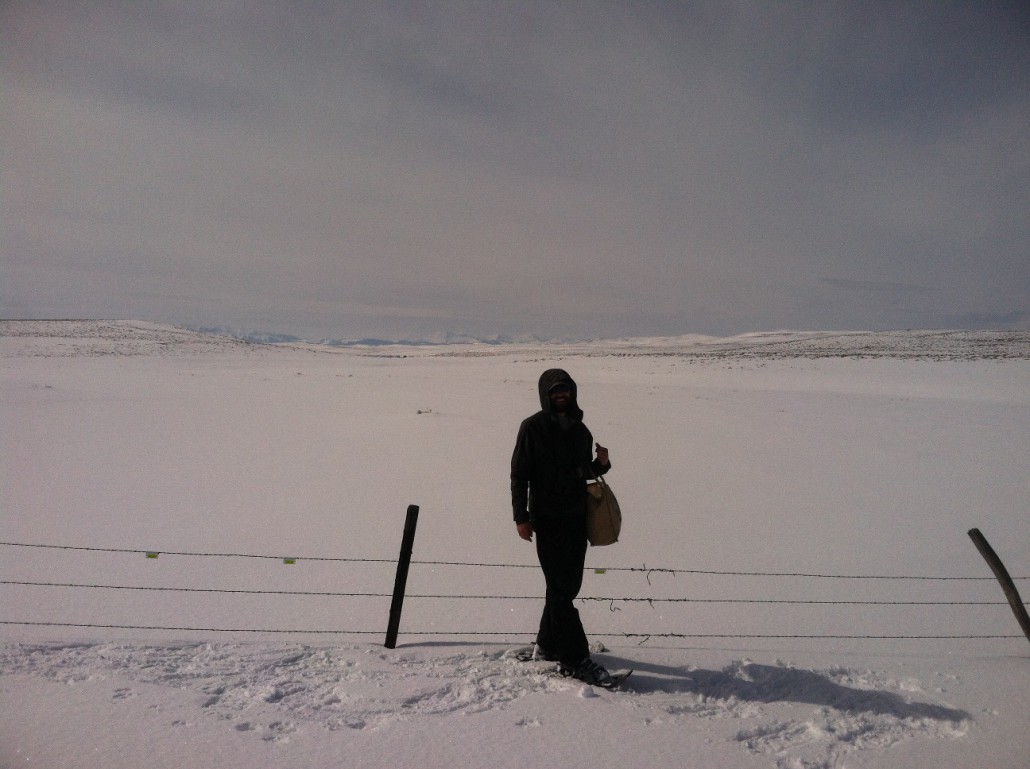
Deep snow covered one or more strands of wire at many of the sites through March of last year. Photo by Taylor Gorman.
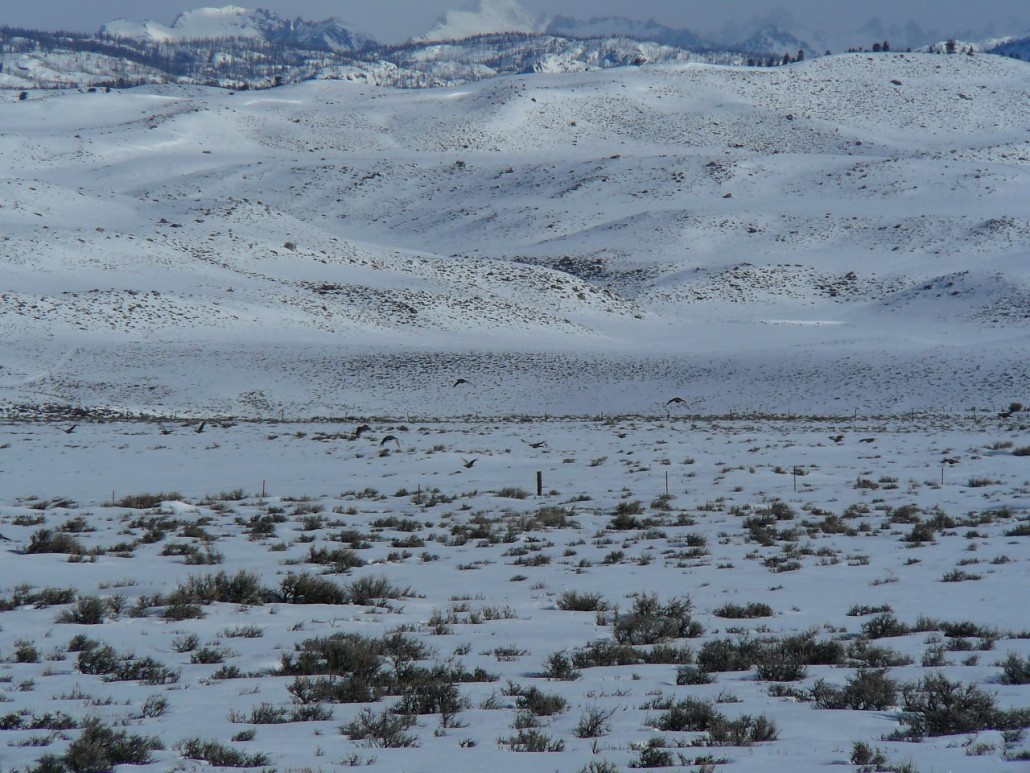
Greater Sage-Grouse take flight during last spring’s study season. Only the posts of the fence line in the background are visible. Photo by Galen Reid.
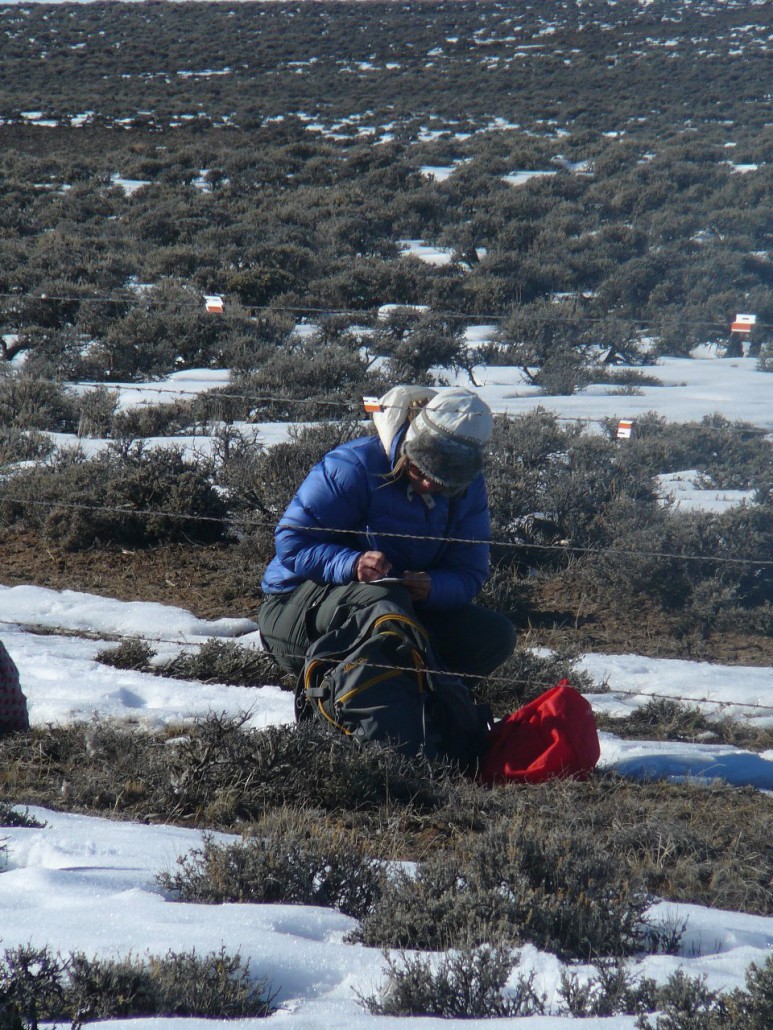
A technician records survey data last spring. Photo by Galen Reid.
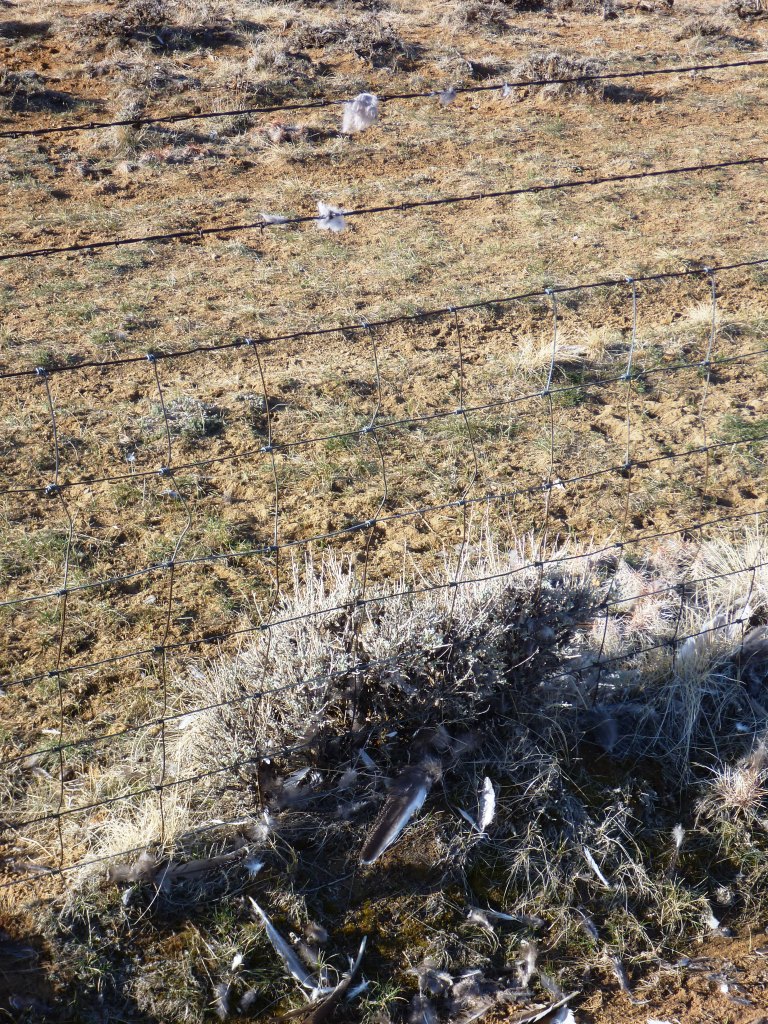
Evidence of what we consider a “confirmed strike,” with feathers remaining in the fence. These feathers belonged to a Greater Sage-Grouse. Photo by Laura Quattrini.
We’re still digging through data from last spring, but we’ve already noticed a few interesting things. The strike evidence is persisting in the environment longer than we suspected, despite the Wyoming wind. Also, we are discovering evidence that more than just Greater Sage-Grouse are colliding with fences. Lastly, we’re finding lots of evidence of raptors plucking and consuming their meals atop fence posts, which is not surprising considering the high density of Rough-legged Hawks and Golden Eagles that make Sublette County their home in March and April.
Next week, we plan to revisit the study area and begin patrolling fencing for the next two months. During that time, we’ll document how the different styles of markers are holding up to the Wyoming wind, cold and cattle and collect additional data on fence-related grouse mortality. We’re anticipating finding considerably more instances where sage-grouse hit the fences this spring for several reasons: (1) last year’s snow covered much of the fencing, meaning there wasn’t much exposed fencing to collide with at quite a few of the sites; (2) the crew will begin surveying about two weeks earlier than in 2014 because we won’t have to install markers this year; and (3) it’s possible that the sage-grouse weren’t using many of the areas within our study sites last year because the deep snow was covering much of the sagebrush – their primary source of food in the winter. Stay tuned for our next fence marking blog post to learn how the 2015 spring season went and what we found!
~ Taylor Gorman, Field Crew Leader, and Nick Van Lanen, Biologist


